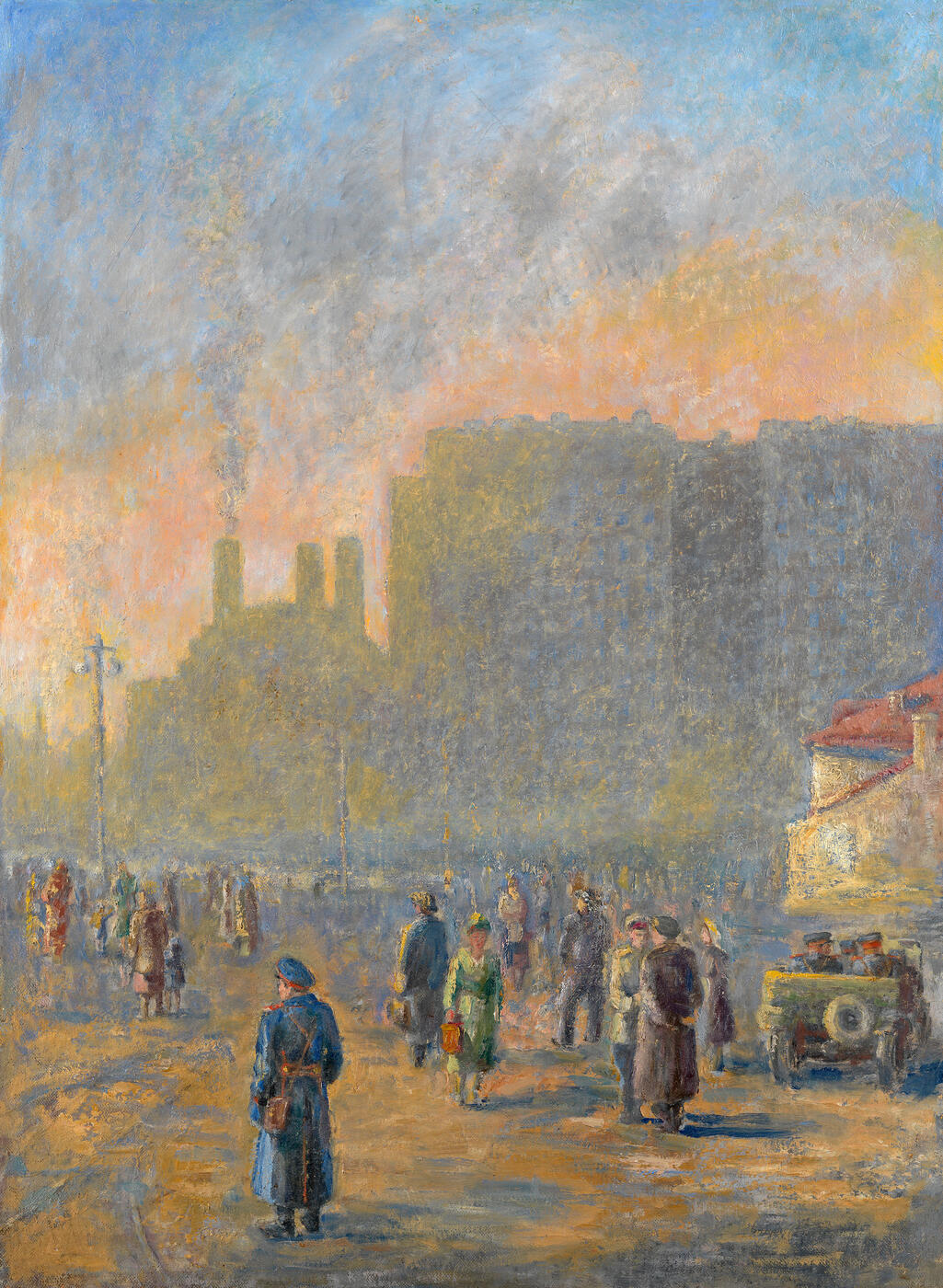27 Nov 2013 Russian Art Auctions
27 November 2013

* 79. SAMOKHVALOV, ALEXANDER (1894-1971)
Fireworks. Vasilievsky Island .
Oil on canvas, 95.5 by 70.5 cm.
200,000–300,000 GBP
Executed in the 1950s.
Provenance: Collection of the artist’s family.
Private collection, Europe.
Authenticity of the work has been confirmed by Maria Samokhvalova, the artist’s daughter.
Authenticity has also been confirmed by the expert Yu. Rybakova.
Fireworks. Vasilievsky Island was painted in 1944 on Alexander Samokhvalov’s return to Leningrad after his evacuation, at a time when the artist had enthusiastically embarked upon depictions of the city he loved. Apart from his canvasses which are permeated with the pathos of victory and the urgent construction effort – Leningrad Rises Again, Warriors Remember, Friends Meeting – the portrait he creates of the hero-city of his birth is a romantic one, the main theme becoming the peacetime revival of its streets and parks.
The artist’s Leningrad of the 1940s and early 1950s, whether city street scenes or grand ceremonial compositions, is almost always eventful. He is interested not just in sketching views, but in the very pulse of life in the city. Sometimes he addresses the theme of Soviet public holidays – Morning on 1st May, In the Park – but in his most inspired and lyrical work he prefers the everyday reality of his beloved Vasilievsky Island. Here, after all, on a side street called Tuchkovy pereulok, was the studio that Samokhvalov had inherited after the death of the famous graphic artist Pavel Shellingovsky. Samokhvalov always took pride in this succession, feeling that the genius loci made him close to one of the masters he most respected and held most dear.
Fireworks. Vasilievsky Island is one of the canvasses he painted in the neighbourhood of his studio. There are several known compositions in the legacy left by Samokhvalov that have the title On Bolshoi Prospekt, Vasilievsky Island and in all probability Fireworks is a continuation of this subject.
Samokhvalov uses a great many different gradations of hue, leading into one another, as in a musical scale, and finding their place in the massive lilac and blue-grey buildings and chimneys of the thermal power plant, the glare in the sky and its blueness, the muted painting of the human figures, the red roof of the house and the broad, grey-brown expanse of the paved ground. The artist brings the tints as close as possible to each other in a fluent melody of colour definition. All the objects and details of the urban scene – the houses, tram lines, motor vehicle, street lamps and even passers by, among whom is the conspicuous figure of a serviceman standing
alone in the foreground – are, as it were, shrouded and seen through the haze of a special light that envelops them. This light that suffuses the picture lends a unity to all the colours within it. The texture of the painted canvas is characterised by the same complexity. Working the brush in precise, rhythmic strokes, Samokhvalov uses the paint not to sculpt objects as volumes, but to sculpt the surface of the canvas. Each brushstroke, it emerges, is not so much a definition of shape as the means to a complex gradation of colour, the idea being not only to achieve chromatic balance but, chiefly, to resolve the problem of how the objects and the environment relate to each other.
The modulations of colour in the light of the sky are exquisite, and there is in general a certain elusiveness about where the colours separate. This imparts to an utterly specific urban subject, brimming with life, the sense of ‘standing still for an instant’, a pause in time that the artist captures in order to feel the beauty of everyday reality in the city. It is this feeling that may be considered Samokhvalov’s chief artistic achievement in the years of the post-war period. Samokhvalov’s close associate at the studio, Yuri Pimenov was right when he said: “Samokhvalov was one of the best artists of that time – his pictures had the rhythm of contemporary life...”
Notes on symbols:
* Indicates 5% Import Duty Charge applies.
Ω Indicates 20% Import Duty Charge applies.
§ Indicates Artist's Resale Right applies.
† Indicates Standard VAT scheme applies, and the rate of 20% VAT will be charged on both hammer price and premium.